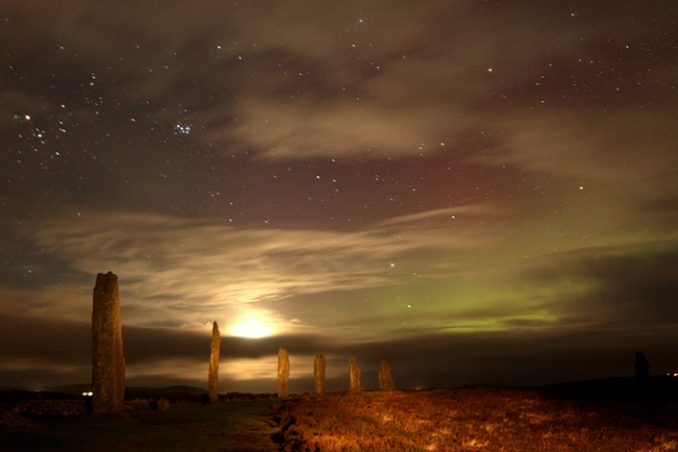Archaeologists Uncover Bronze Age Settlement On Scottish Islands Of Orkney
Shifting sand dunes have uncovered a major new Bronze Age settlement in Orkney. Archaeologists from the University of the Highlands and Islands made the discovery on Sanday, a small island to the north of the Orkney mainland. Stone walls belonging to 14 houses have been found, which experts now believe could be one of the largest Bronze Age settlements ever found in Scotland. However, the 4000-year-old complex is threatened by coastal erosion and work is underway to find out as much as possible before it is destroyed. A large number of stone mattocks – similar to pickaxes – have been found discovered along with stone bars, hammerstones and stone flaked knives.
Orkney (Scottish Gaelic:Arcaibh) is an archipelago off the northeastern coast of Scotland. The islands have been inhabited for at least 8,500 years. Originally occupied by Mesolithic and Neolithic tribes they are famous for their many Neolithic sites. The 'Heart of Neolithic Orkney' is a group of 5,000-year-old sites on Mainland, the largest island.
Skara Brae is the best preserved Neolithic village in Northern Europe.
Maeshowe is a chambered burial tomb aligned so that its central chamber is illuminated on the winter solstice. Vikings who entered the tomb in the 12th-century left the largest collections of runic inscriptions in the world.
Ring of Brodgar a stone circle over 341 ft (104 metres) in diameter, originally composed of 60 stones set within a circular ditch forming a henge monument.
Standing Stones of Stenness –the four remaining megaliths of a henge, the largest standing 19 ft (6 metres) high.
Ness of Brodgar is an archaeological site between the Ring of Brodgar and the Stones of Stenness which has evidence of housing, decorated stone slabs, a huge stone wall with foundations, as well as a large building which has been described as a Neolithic cathedral.
Neolithic Orkney has UNESCO World Heritage Site status. Photograph of the Ring of Brodgar is from the Visit Orkney website.

- Douglas MacQueen's blog
- Log in to post comments





